Archive
Peter Schiff Testimony Before Congress on Obama Jobs Bill 9/13/11
-
Peter Schiff, president of EuroPacific Capital was invited to testify in front of the House of Representatives Subcommittee on Government Reform and Stimulus Oversight. Here’s a 22-minute condensed version of his 22-minute version with his remarks and exchanges with the Committee.
| Peter Schiff argued why government stimulus will never grow the economy, and why it will never create jobs.
“Stimulus is preventing the free market from unravelling the problems that years of bad monetary & fiscal policies have created.” He calls for under consumption, savings, investments, reduced government spending, smaller government, a reduced regulatory environment, among others. |
|
Watch the entire Committee Meeting
Like this:
If history is any guide
-
Our generation grew up with the USD as the global reserve currency, and until recently, few would have questioned its status. Since the global financial crisis of 2008, and more so in the last few months, increasingly large segments of the global community have been questioning the status quo to the extend of actually preparing themselves for the inevitable day when the USD loses its reserve currency status.
Source: The Gold Standard Institute
While the average lifespan of global reserve currencies is around 100 years, the average lifespan of fiat currencies is only 27 years. Most if not all of the above global reserves currencies had some form of gold or silver backing in one form or another, that is they were not fiat currencies. The USD has been serving as a global reserve currency for over 90 years, 40 of which as a fiat global reserve currency.
If history is any guide, the USD is fast approaching its “use by date”. It is little wonder that many are preparing not just for the inevitable loss of its reserve status but also the demise of the currency itself.
Like this:
Why $20,000 Gold doesn’t excite me
-
It scares me!
Gold punched through $1,900 today. If the current financial system can withstand the stress and remained intact till the day gold trades at $20,000 an ounce, what will life be like then?
If we’re holding gold at that time, we may be doing fine but we are not likely to be 10 times richer. That’s because nothing much has happened to our gold. Rather, paper currencies would have lost so much purchasing power that it would take 10 times more of the same to buy what we could buy today. A Big Mac will most likely cost around $43 in the US. In Malaysia, NZ and Britain, it’ll like be around RM76, NZ$54 and £25 respectively (estimates based on Big Mac Index). When a basic meal costs that much, life can be very tough for savers who continued holding on to their paper currencies or other paper assets.
Many of my friends and relatives, from retired professionals to missionaries have been ill advised to rely on supposedly safe or high yielding investments like mutual funds, government managed pension schemes, term deposits or hot stocks to generate passive income or preserve the value of their retirement funds. Despite being presented with information from this website and elsewhere, there’s little affinity shown towards gold or silver. This scares me and for their sake, I hope gold does not get anywhere close to $20,000 before they get on board.
What’s even scarier is the fact that an enormously huge segment of society do not have the means to get on board, even if they wanted to. We’re looking at the 1.4 billion people living on less than NZ$2.25 a day. That’s less than 0.05 ounces of silver! They worry not about the Fed nor the Cartel but about how to provide food, clothing, housing and healthcare with that amount each day. It’s about survival, not savings. Pause for a moment to imagine their plight when gold hits $20,000. Spare them a thought today, and check out their appeal for assistance.
Why $20,000 gold?
In this recently released documentary, Mike Maloney presents the case for $20,000 gold by stepping back and looking at the big picture. He takes us back, very far back, and paints us a very big picture. This excellent educational video is a must watch, especially if you’re new to the Political Metals space. It’ll be your 90 minutes well spent.
But if you can’t spare the time, I’ve highlighted some of his key points with some new charts below for a quick read.
-
Dow/Gold Ratio Chart: Where are we in the Wealth Cycle?
Using the Dow Jones Industrial Average (Dow) as a measure of performance of the equities market in general, the ratio of the Dow to the price of gold indicates the performance of equities market relative to gold. Currently each point of the Dow is worth about 6oz of gold. During the process of correction after the biggest stock market bubble in history, the ratio is expected to head towards the historical mean (4oz) and overshoot it before finding its fair value again.
The bigger the bubble (deviation from mean), the larger the overshoot. During the present cycle, Mike expects the overshoot to touch 0.5:1 (1 oz of gold worth 2 points of Dow). In its extreme, the Dow would have to collapse from 11,000 to 950 if the price of gold remains at current level of $1,900. Conversely, gold will increase to $22,000 if the Dow remains at current levels.
Relative performance of Dow Vs Gold & Silver since Jan 2000
(Worst reference point, at peak of stock market bubble)
Relative performance of Dow Vs Gold & Silver since March 2009
(Best reference point, at the start of QE1)
Currency Supply Chart: Where are we in the Inflation/Deflation Cycle?
For simplicity, “money” & “currency” are used interchangeably here. Watch the video to see the difference.
Monetary inflation is the increase in money supply resulting in price inflation (rising prices of goods & services), with a time lag between the former and the latter. The reverse applies to monetary deflation and price deflation. Studying the trend in money supply or the total amount of currency in circulation (CinC) over a period of time gives us an idea of where we are and where we’re heading in terms of inflation and deflation.
Money is created in two stages. The initial Base Money is created by the Fed (or other central banks). More new money is then created (up to 9 times the initial Base Money) within the private banking system through credit. It is loaned into existence. Watch the video to learn more about the money creation process.
The chart above represents the amount of CinC that’s exclusively created by the private banking system. The highlighted area indicates that this component of the overall money supply has dropped by $1.7T since the 2008 crisis. This is the Debt Collapse or Credit Contraction. Less lending by banks results in less money chasing goods and services, leading to price & asset deflation. It is evident from the chart that a contraction of this magnitude has never happened since 1960. The last time it happened was just before the Great Depression of the 1930s.
 In response to this credit contraction, and in an attempt to prevent another Great Depression, the Fed has been rapidly increasing the Base Money supply by creating new money. The recent rate of increase is unprecedented. The first trillion dollars was created over a period of about 90 years. The next $1.4T came into existence over the last 2 years!
In response to this credit contraction, and in an attempt to prevent another Great Depression, the Fed has been rapidly increasing the Base Money supply by creating new money. The recent rate of increase is unprecedented. The first trillion dollars was created over a period of about 90 years. The next $1.4T came into existence over the last 2 years!
This rapid increase in Base Money (red chart) was an attempt to offset the decrease in the credit money (blue chart). When we add these two components of money supply together, we obtain the total CinC (Base Money plus Credit Money) as shown in the chart below.
Notice the contraction at the top of the chart, albeit a smaller one. It is evident that despite the frantic pace of money printing by the Fed, it has not succeeded in offsetting the reduction in money supply due to credit contraction.
The Fed has little choice but to continue creating money. With such a large perturbation in total currency supply and due to the complexity and size of the monetary system, it is not possible for the Fed or anyone else to create just sufficient money at just the right rate such that the total CinC won’t overshoot its long term trend. The principle that the larger the deviation from the mean, the larger will be the overshoot during the correction applies here as in the stock market above. The fact that there’s an undetermined time lag, between monetary inflation and price inflation further adds to the likelihood that the next round of money printing will result in a massive overshoot. Coupled with other factors, hyperinflation could be just round the corner.
In his book, Rich Dad’s Advisors: Guide to Investing In Gold and Silver: Protect Your Financial Future, and again in his presentation, Mike predicted the following sequence of events:-
- Threat of deflation - At the onset of the 2008 crisis (Past)
- Money printing - TARP, QE1, QE2 (Past & more to come)
- Big inflation - Here and now (anyone disagree?)
- Real deflation - Asset deflation in real estate & stock market (The severe but short deflation is ahead)
- Hyperinflation - Just round the corner?
How does gold perform under inflation and deflation environment? Check out the study by Oxford Economics: “Impact of inflation and deflation on the case for gold”.
Related Resources:
- Fractional Reserve Banking - Two short video clips on money creation
- Crash Course on Banking, Finance & Economy. By Chris Martenson
- Central Banking and the Federal Reserve System (Fed)
Like this:
Bullion Bank Run - Pressure from the Top and Bottom
-
The largest physical movement of gold in recent history is under way.
Hugo Chavez, Venezuela’s President wants to move his country’s 211 tonnes of gold (over $12B at Friday’s close) currently stored in American & European banks back to Caracas.
Major upward moves in gold prices over the past couple of years have been tied to central banks’ activities in the gold market, like the big purchases by India, China & Russia.
However, this recent move by Venezuela is rather unique. Instead than buying more gold, Venezuala merely wants to repatriate what is already hers. Unlike central bank purchases, which could involve just a ledger entry, this is the real thing. Physical gold is being moved around. What’s more significant is the discovery that after accounting for the 99 tonnes and 11.2 tonnes being held at the Bank of England (BoE) and Bank of International Settlements (BIS) respectively, about half of this huge stash are held in bullion banks like JP Morgan Chase et al - all major gold shorts. The move has left them scrambling for the real stuff.
This has led many to believe that the “Golden Retrieval” may have been a contributing factor to the most recent spike in gold price. It hits at the core of what GATA has been highlighting for over a decade - that bullion banks have been working hand in glove with central banks to suppress the price of gold, and that much of the physical gold at bullion banks and central banks are encumbered, leased or sold many times over, resulting in multiple claims for each bar of physical gold.
Bullion Bank Run - Pressure from all sides
When a major “client” like Venezuala suddenly decides to take physical possession of her gold, it may cause a run on the bullion banks, not unlike the much feared bank run for cash. Bank runs start when depositors begin to lose confidence in the banks holding their cash. All it takes is a a few large depositors withdrawing at the same time, thereby creating the initial stress in the fractional reserve banking system. Soon, the panic hits the masses and long lines form outside the banks.
We have to depend on what the west often refers to as rouge nations - and there are good reasons to believe that there are several out there in a position to take the cue from Venezuala. That’s because it is common practise among central banks to hold their gold outside their countries at ”trading centers” where the bank conducts “its gold activities” - according to a report by GATA citing a comment from Bundesbank. Take a look at this list and see how many potential rouge nation triggers you can spot among the larger holders of gold. As highlighted by Adrian Salbuchi in the video above, there is a political element to Chavez’s radical decision. I can see several rouge nations in that list having similar political motives.
With increasing awareness that the perils of wars, global poverty and social injustice can be attributed in part to our present fraudulent monetary system, there have been many calls to help speed up the inevitable demise of the failed experiment to run a global economy on a debt-based monetary system. All adopt the common strategy of advocating the purchase of physical gold & silver (especially the latter) to protect oneself financially while helping to create stress in the supply of physical bullion to bring down the banking cartel. They include:
- Silver Liberation Army - Buy physical silver coins, bring down JP Morgan & the banksters
- Sons of Liberty Academy - The Silver Bullet And The Silver Shield
- Underground Investor - Smack down the criminal global banking cartel with gold & silver
The set up before us is interesting. While the masses apply pressure from the bottom, we have the deep pocketed boys, institutional investors and money managers primed to move big time money into gold & silver following the recently concluded GATA’s Gold Rush 2011 London conference. That’s pressure from the middle. Now, with the likes of Venezuala starting to apply pressure from the very top, we may see the tipping point for a bullion bank run soon.
-
Updated:
Aug 22, 2011
Libya Down: The link between Libya’s swift regime change, its 144 tonnes of gold & Venezuela’s gold repatriation.
Related Articles:
-
Like this:
The Race to Debase
Monitoring the Currency Wars
Most Recent: Australia Interest Rate Cut
|
Currency Wars Simulation |
Most Popular
Most Recent
Archives
Featured Reviews

16Oct: Jeff Clark (Casey Research)
$2,300 gold by January 2014
05Sep: Bill Murphy (GATA)
$50 silver by year end
13Aug: James Turk (GoldMoney)
We won’t see $1580 gold & $27 silver again
12Aug: Bill Murphy's source
We could see a 100% increase in 90 days.
03Aug: HSBC Analysts
Gold to rally above $1,900 by end 2012
05June: David Bond (SilverMiners)
Gold & Silver may bottom at $1,200 & $18
02June: Don Coxe (Coxe Advisors)
Europe to issue Gold-backed Euro Bonds within the next 3 months
21May: Gene Arensberg (GotGoldReport)
Gold and Silver are very close to a bottom, if one has not already been put in last week
>> More forecasts & forecast accuracy
Featured Videos
|
German Central Bank pledged to the Fed never to buy gold again |
|
George Soros: His role in major world events as agent of the British Empire, as told by LarouchYouth |
 Gold & Silver Interviews (KWN)
Gold & Silver Interviews (KWN)
- Greyerz - Two Absolutely Incredible & Key Gold Charts October 26, 2012
- Celente - It’s Not Just Germany’s Gold That’s Missing October 26, 2012
- What To Expect With Gold Assaulting $1,700 & Silver At $32 October 26, 2012
- James Turk - The Entire German Gold Hoard Is Gone October 25, 2012
- KWN Update - Here Is A Huge Key To The Markets October 25, 2012
- Currency Wars Continue To Rage & This Is Positive For Gold October 25, 2012
- Central Planners Greatest Fear, Possible Surprises & Gold October 24, 2012
- Nigel Farage - We Are Headed To A ‘One World Government’ October 24, 2012
 Finance & Economics
Finance & Economics
- Guest Post: A Golden Opportunity October 26, 2012 Tyler Durden
- More than a Dozen Nuclear Plants Near Hurricane Sandy’s Path Brace for Impact October 26, 2012 George Washington
- The Complete 'Advanced' Economy Sovereign Ratings Cheat-Sheet October 26, 2012 Tyler Durden
- Could the U.S. Election Release the Bulls? October 26, 2012 Burkhardt
- Guest Post: Putin Is the New Global Shah of Oil October 26, 2012 Tyler Durden
- Friday Humor: Barack Obama talks about Communism October 26, 2012 dottjt
- Forget 1%, 99% Or 47%: It Is The Turn Of The 70% To Be Pissed October 26, 2012 Tyler Durden
- Why The Real Earnings Picture Is Bad And Getting Worse October 26, 2012 Tyler Durden


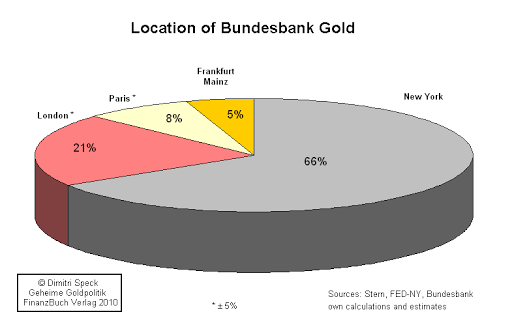


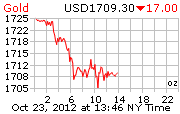
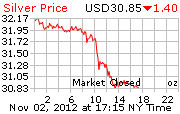
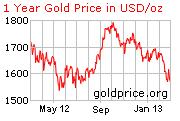
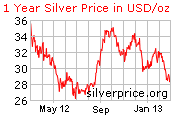
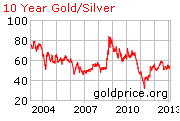
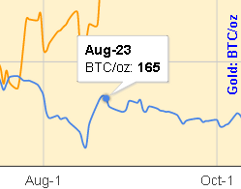
Silver is Oversold “It’s a License to Steal”
-
Here are two great interviews discussing the reasons & implications of the recent price action of gold & silver.
-
Sean (SGT Report) discusses the recent silver price take-down with David Schectman.
-
Al Korelin (Korelin Economics Report) discusses the recent silver price take-down with David Morgan. Some key points:
Share this:
Like this: